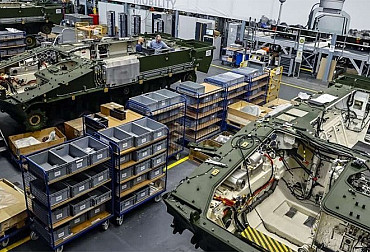Heron 1 got another European permit to fly in civil airspace, this time in Greece
On the recommendation of EASA, the European Union Aviation Safety Agency, the Greek civilian aviation authority has issued a permit allowing IAI’s Heron 1 UAV to be flown in Greek airspace. The permit allows the system to be used in the operational activities of the European Border and Coast Guard Agency, whose charter is to provide maritime surveillance and coastal protection.
 Picture: Heron MK II | Israel Aerospace Industries
Picture: Heron MK II | Israel Aerospace Industries
The UAV flights are carried out in Europe’s civil airspace according to civil flight procedures. The Greek case is the last of several examples, where IAI´s Heron 1 UAV was granted such a permit in European and NATO countries (France and others). In respect to the intent of the Czech Ministry of Defence to procure the most modern version of Heron 1 UAV for the Czech Army, it demonstrates that certification of Israeli UAVs enabling them to use civilian airspace is standard and regular procedure and that Heron 1 is fully capable to fly within the rules of civilian air traffic in Europe.
The Heron 1 systems are equipped with electrooptical day- and night-vision payloads and marine surveillance radars that provide an up-to-date, realtime, accurate intelligence picture. This information is then distributed to decision-makers in situation rooms by means of a specialized system that ensures the smooth coordination, planning, and command of the various tasks and assignments.
Moshe Levy, Executive VP & GM, Military Aircraft Group, commented, “IAI is extremely proud that our proprietary UAV is flying in Europe’s civil airspace. Together with our partners at Airbus, we are ready to provide the best possible service. IAI’s Heron has already accumulated over 500,000 operational flying hours globally with countless successful missions. We look forward to seeing it succeed yet again.”
IAI’s Heron UAV has a rich operational record of serving Israeli, European, and many other customers worldwide. It is designed to perform prolonged strategic and tactical assignments, including those under extreme weather conditions, while simultaneously carrying many payloads (and sensors) and transmitting realtime information to the forces and decision-makers on the ground.




















